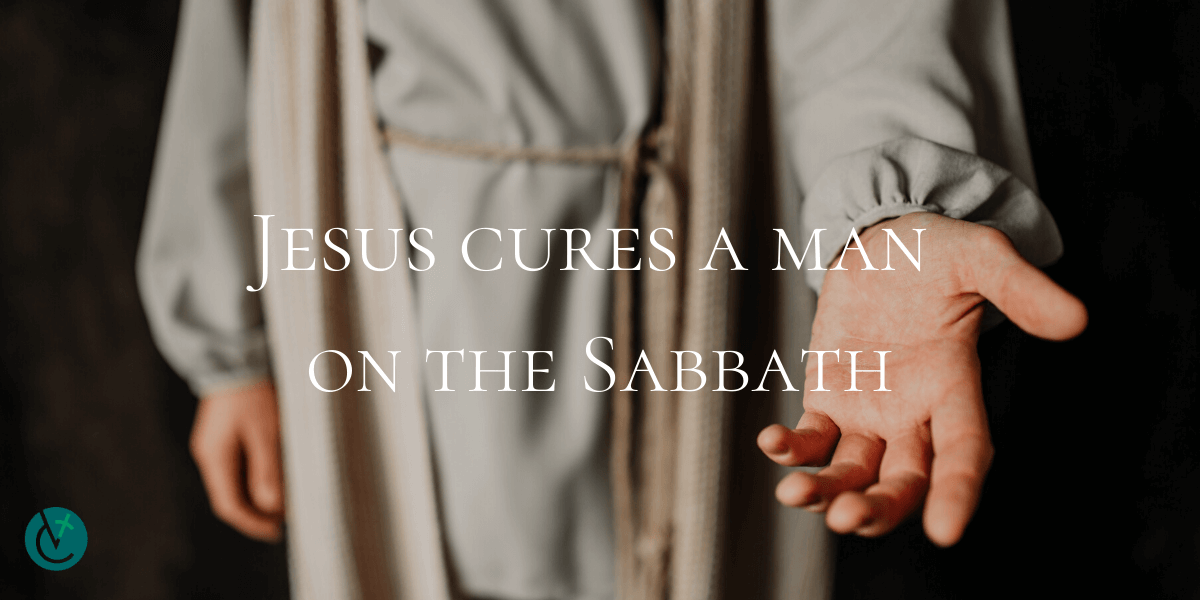
Jesus cures a man on the Sabbath
Jesus returned to Galilee after spending 40 days in the desert. He traveled all around the area, healing those who were sick and calling people to follow him.
One day Jesus and his friends were walking through a field of grain. It was the Sabbath, a day of rest on which no work was to be done.
As they walked through the field, Jesus’ followers picked the heads of grain, rolled them between their hands and ate them.
The Pharisees noticed and questioned Jesus.
“Why are you doing what is unlawful on the Sabbath?” they asked.
Jesus reminded the Pharisees what David had done in 1 Samuel 21:1- 6.
David was fleeing King Saul, who wanted to harm him. During his flight, David stopped and asked the priest of Nob for five loaves of bread, but the priest only had holy bread to give him.
“Have you not read what David did when he and those (who were) with him were hungry? He went into the house of God, took the bread of offering, which only the priests could lawfully eat, ate of it and shared it with his companions,” Jesus said.
“The Son of Man is lord of the Sabbath,” he added.
On another Sabbath, Jesus was teaching in the synagogue. One of the men who was there had a withered right hand.
After the incident with the grain, the Pharisees and scribes were watching Jesus closely to see if he would cure on the Sabbath so they could accuse him of wrongdoing.
Jesus knew what the Pharisees and scribes were up to.
“Come up and stand before us,” he said to the man with the withered hand.
Jesus addressed the people he had been teaching.
“I ask you, is it lawful to do good on the Sabbath rather than to do evil, to save life rather than to destroy it?” he asked.
Jesus turned back to the man.
“Stretch out your hand,” he told the man.
The man stretched out his hand, and the withered hand was restored.
The Pharisees and scribes became enraged and began to talk about what they could do to Jesus.
—Jennifer Ficcaglia
—Originally published in the Fall 2019 issue of Vermont Catholic magazine.

